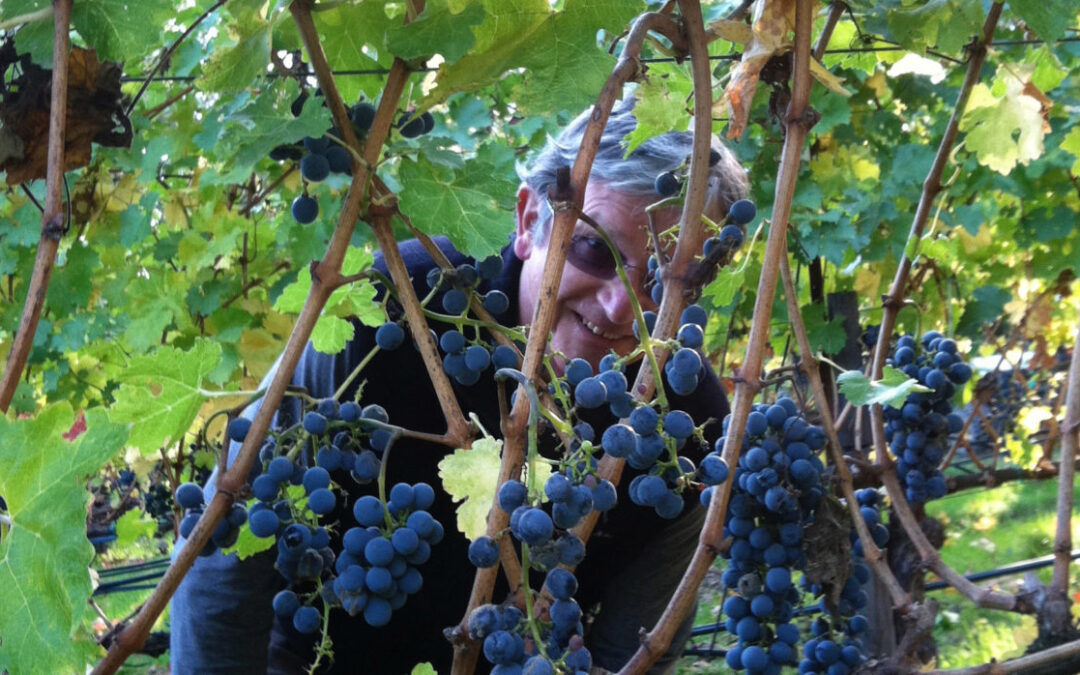I suppose every field has its controversies. Two that we hear about quite often in wine production are alcohol level and the hundred point scale. I will address them together as I believe they are closely linked. Over the last decade or so we have seen alcohol levels in table wine creep up. Levels of 15%, 16%, even 17% are not uncommon. It used to be that 14% was considered high, with most wines in the 12 to 13% range. What happened?
At the time we entered the wine business, in the early 70’s the models for “great wines” were relatively few. The very top ones had long track records, and were considered classics. We tasted Bordeaux and Burgundies, as well as Napa Valley Cabernets, that were structured “classically” and appreciated for their ageability. How did we learn about them? We read books about wine, written by well-known authors, and met individuals with lots of expertise to share, often with deep cellars as well. These wines became our models and we turned to them again and again, and wished to emulate them in our winemaking efforts.
In the 90’s things began to change. There was a huge amount of new wealth created by the high tech industry. The surge in disposable income brought in lots of new wine consumers, and lots of wine brands were created. Without a background in wine knowledge and faced with overwhelming choices, many consumers were looking for direction in order to appear wine knowledgeable. In an increasingly complex world, our particular culture became enamored with ratings, lists, and authorities. We had nightly top ten lists. We demanded that sports teams have playoffs such that we could proclaim “were number 1” and the athletes were excused from any standard of behavior as long as they won. We no longer required much actual knowledge from experts (just being on television seemed to ensure that an opinion demanded attention) or smarts from leaders (this is to be a politically neutral zone but it is amazing the extent of risks we are willing to take on based on pundits’ analyses identifying “bad guys vs. good guys).” Reasoning became less important than choosing sides. Staged dramas were called “reality shows.” Magical thinking became more acceptable than critical thinking.
Into this milieu steps the 100 point scale. Perfect for the culture at this point in time. The sports writer or lawyer becomes the wine expert. Who’s number 1?. What’s the top 100? Conversation overheard in a wine shop at the end of the decade: I wanted 97’s, you sent me 95’s. Talking about vintage? No, points.
Faced with a hundred wines in a day to taste, how is the poor expert going to function? This isn’t arty, ain’t no discussion (he’s got no time for that now). Forget about finesse and subtlety, we are in a rush to judgment. Hedonistic is the way to go…gobs of it!
And so it goes like this: grapes picked too soon are lean, restrained, tight, and in some varieties a bit “green.” Then they soften up and show what they have: varietal characters for sure, hopefully regional or site specific ones. Beyond that they go pruney, then raisin-y. In former times, we might have erred on the green side, reluctant to ever sacrifice the rationality or the characters of site. In this new reality show, green may be cool for energy, but not in the rocket juice, where it will just have to be voted out. Ageabilty? That is so yesterday. In the old paradigm desiccated grapes of a certain brix were called Amorone, in the new paradigm they are called “numba one”.
How do we deal with these phenomena? First of all, we don’t subscribe to the bigger is better style of winemaking. We stick to our guns in valuing balance and finesse. We consider that vineyard sites that give age ability are national or better said, planetary treasures. We feel we have such a site, in fact our wines tell us that. While we don’t get too fussed about wines made in the gaudy style garnering the big points, we do feel that there should be room for a range of styles, and don’t appreciate the narrow focus on the part of some reviewers. (A famous pianist we met said “the crickets are always with us” in reference to the pundits of his world). We have generally taken a pass on sending our wines in for review, but on occasion have yielded to direct requests. Results have generally been favorable and solid, about what we would expect in making wines of restraint and balance (note that the reviewers generally ignore the age-ability question, only rating wines on release, which some winemakers have found to be a rather easy thing to “game.”

